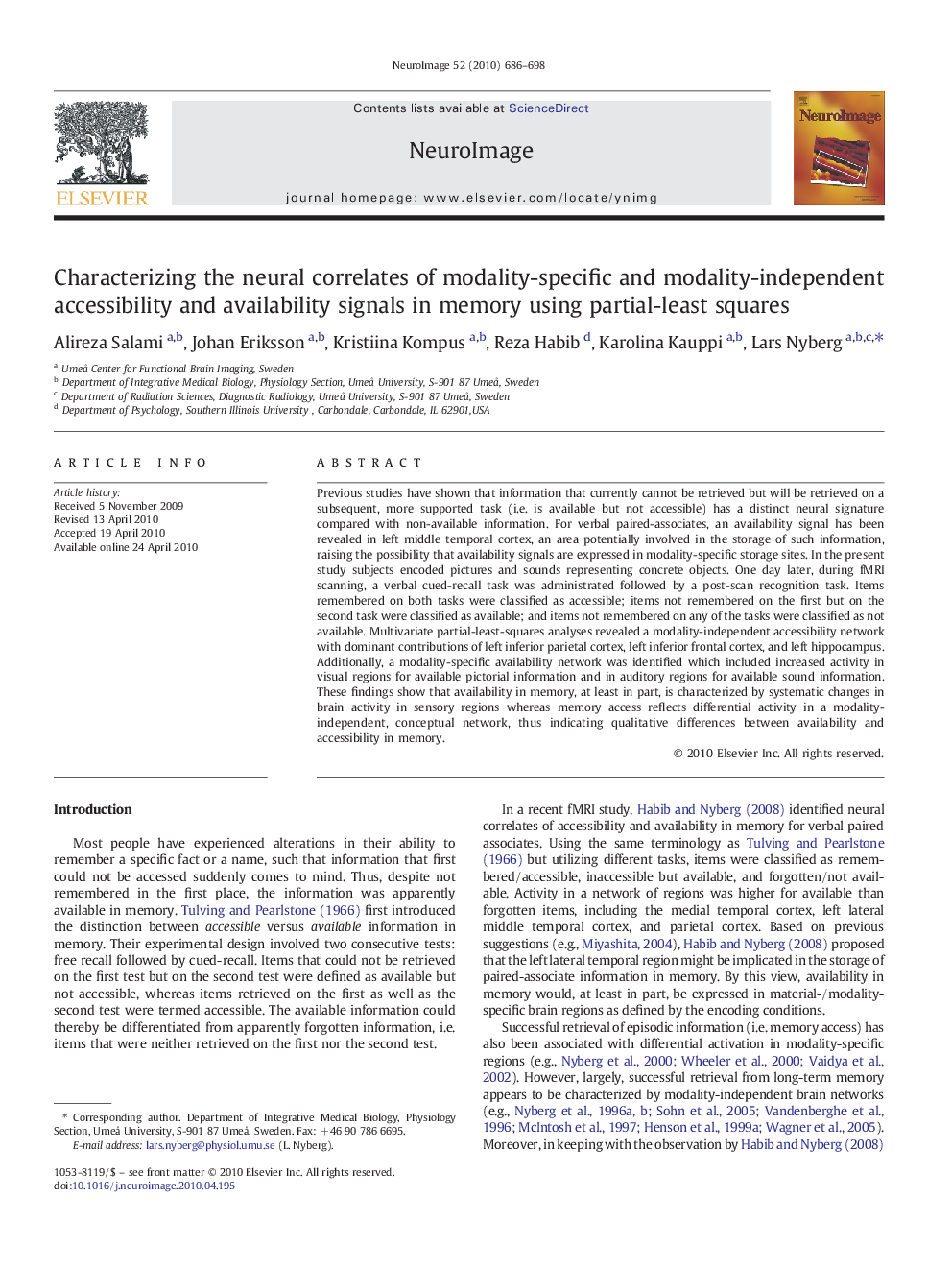| Article ID | Journal | Published Year | Pages | File Type |
|---|---|---|---|---|
| 3072196 | NeuroImage | 2010 | 13 Pages |
Previous studies have shown that information that currently cannot be retrieved but will be retrieved on a subsequent, more supported task (i.e. is available but not accessible) has a distinct neural signature compared with non-available information. For verbal paired-associates, an availability signal has been revealed in left middle temporal cortex, an area potentially involved in the storage of such information, raising the possibility that availability signals are expressed in modality-specific storage sites. In the present study subjects encoded pictures and sounds representing concrete objects. One day later, during fMRI scanning, a verbal cued-recall task was administrated followed by a post-scan recognition task. Items remembered on both tasks were classified as accessible; items not remembered on the first but on the second task were classified as available; and items not remembered on any of the tasks were classified as not available. Multivariate partial-least-squares analyses revealed a modality-independent accessibility network with dominant contributions of left inferior parietal cortex, left inferior frontal cortex, and left hippocampus. Additionally, a modality-specific availability network was identified which included increased activity in visual regions for available pictorial information and in auditory regions for available sound information. These findings show that availability in memory, at least in part, is characterized by systematic changes in brain activity in sensory regions whereas memory access reflects differential activity in a modality-independent, conceptual network, thus indicating qualitative differences between availability and accessibility in memory.
